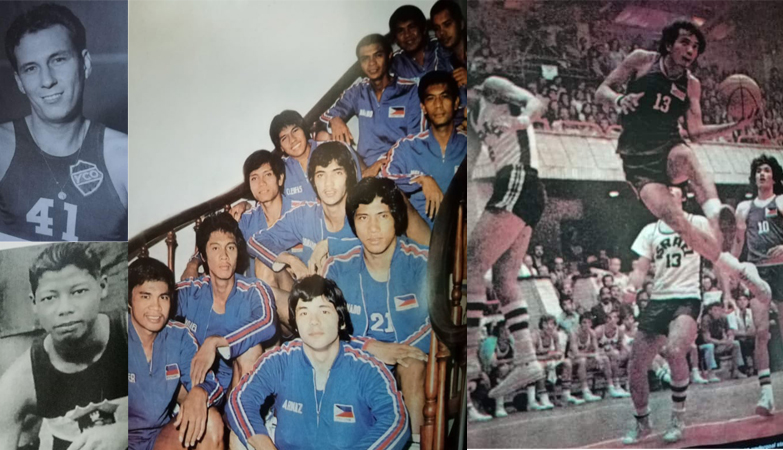
PHILIPPINE basketball history is rich with legendary athletes from the 1900s to the present time.
However, local hoop followers, whether the young from the Generation X or the new wave of millenials, know not much from the halcyon days of local basketball.
Filipinos reigned supreme in the biennial Far Eastern Games (FEG), winning nine of the 10 editions from 1913 to 1934. The only one edition that escaped from the grasps of the Pinoys was in 1921 in Shanghai, China when the host team emerged victorious. One other prominent country that took part in the FEG was Japan.
The Philippines was the kingpin in Asia since the 1950s, topping men’s basketball in the first four editions (1951 New Delhi, 1954 Manila, 1958 Tokyo, 1962 Jakarta) of the Asian Games with a combined 23-1 record. The country’s only setback came at the hands of China, 93-88, in 1958 in a non-bearing game.
We eventually surrendered the crown to Israel (which moved to Asia out of the Middle East) in Bangkok in 1966, relegated to sixth place under coach Fely Fajardo with a 4-3 record despite the appearances of veterans Adriano Papa Jr., Renato Reyes, Jaime Mariano, Edgardo Ocampo, Alberto (Big Boy) Reynoso, Edgardo Ocampo and Alfonso Marquez and then up-and-coming stars from the collegiate ranks, Robert Jaworski and Danilo Florencio.
The Philippines has never won the Asia gold since that time.
In the Asian Basketball Confederation (the forerunner of the FIBA Asia Championship), the Philippines took the maiden tournament in Manila in 1960 with an immaculate 9-0 record.
In the next edition in Taipei in 1963, we again posted a gold medal with a 9-2 record, notwithstanding losses to South Korea, 62-59, in the preliminaries that was later avenged, 85-81, in the semifinal round) and China, 96-81, in a no-bearing semis contest before pummeling the Chinese, 91-77, in the titular match for a 2-1 overall record against the losing finalist.
That team was skippered for a second time by the all-time great Carlos Loyzaga, who struck gold in each of six Asian tournament participations with a combined 41-3 record.
In the post-Loyzaga era, we placed second in the 1965 renewal in Kuala Lumpur, regained the crown in Seoul with a perfect 9-0 record behind the so-called “Dirty Dozen” captained by Alberto (Big Boy) Reynoso and mentored by Loyzaga, who by then had retired in 1964 to join the coaching scene.
While the Philippines reached a podium finish in 1969 in Bangkok (bronze, all-time Asian great Shin Dong Pa and South Korea grabbed the gold) and in 1971 in Tokyo (silver behind a gold medal-winning Japanese team bannered by another all-time Asian hotshot Masatomo Taniguichi), the Philippines recaptured the ABC diadem in 1973 in Manila with a lily-white 10-0 ledger.
Long-tom artist Jimmy Mariano was the team captain and the head coach was Valentin (Tito) Eduque, who became famous for his all-white attire while X-ing and O-ing in the sidelines.
Other players on that 1973 team, the most recent homegrown Philippine national unit to date, were a who’s who — William (Bogs) Adornado, Francis Arnaiz, Ramon Fernandez, Robert Jaworski, Alberto Guidaben, Rogelio (Tembong) Melencio, Manny Paner, Alberto Reynoso, Rosalio (Yoyong) Martirez, David Regullano (the first local player known to wear black shoes during the games) and Ricardo (Joy) Cleofas.
It was not until in January 1986 that the Philippines gained the ABC crown again in Ipoh, Malaysia while employing a pair of naturalized players in Americans Jeff Moore and Dennis Still.
Contrary to popular notion, deadshot Arthur (Chip) Engelland was not allowed to suit up since the FIBA allowed just two naturalized players on one team.
Since then, of course, the world basketball body has reduced the quota to just one.
The Philippines would have qualified for the 1986 World Basketball Championship (the harbinger of the FIBA World Cup) in Madrid, Spain but begged off following the political turmoil in Manila.
Following nondescript finishes in the succeeding edition, our boys did not win another medal until we grabbed the silver in the Manila conclave in 2013 built around naturalized American Andray Blatche.
The Islamic Republic of Iran, which by then had made great inroads in the Asian cagedom, snared the gold.
The Philippines qualified for the 2014 FIBA World Cup in Spain for the first time since 1978.
In 1978, Manila played host to the then-known WBC but lost all of its eight assignments behind a ragtag team from the amateur ranks headed by Ramon Cruz, Federico (Padim) Israel, Bernard Carpio and Steve Watson and mentored by Nicanor Jorge.
The Filipino again made it to the FIBA World Cup in China in 2019 through a different three-cycle system of home-and-away games in the Asia-Oceania region. Our boys lost all of their games by humongous margins.
The Philippines will be one of three Asian countries to co-host the 2023 FIBA World Cup.
It will mark the sixth World Cup appearance by the Filipinos.
In the first three editions of the then-known World Basketball Championship, the country fared well. In the second edition in Rio de Janeiro, Brazil in 1954, our boys snared the bronze medal, which until now is the highest finish by any Asian country.
Lauro Mumar was the team captain but the debonaire, mestizo-looking Loyzaga was the team’s meal ticket.
The hulking 6-3 Loyzaga led the team to a 6-3 record overall and his 16.4-point average ranked third in the tournament. He was the only Asian on the five-man Mythical Team.
In 1959 in Santiago, Chile, the country, with Loyzaga back on the team, fell to eighth place despite a 4-2 mark.
The Pinoys returned to the WBC in 1974 in San Juan, Puerto Rico with soon-to-be PBA stars led by team captain Mariano, Fernandez, Jaworski, Adornado, Arnaiz, Alberto Guidaben, Paner and Martirez. The country placed 13th with a 2-5 record under coach Eduque, upsetting Australia, 101-100, and edging Central Africa, 87-86.
The Philippines has not qualified for the Summer Olympics since 1972. It again won’t be playing in the postponed 2020 Tokyo Games, which have been rescheduled a year later in 2021 due to the COVID-19 pandemic.
That is not to say that our country had not been a perennial participant in the biennial spectacle during its glorious days in the past century. It placed fifth in the 1936 Berlin Olympics — still the highest finish by any Asian nation until now — with a 4-1 record built around skipper Ambrosio Padilla, a future Senator of the land.
It ranked 12th in the 1948 Games in London with a 4-4 record. In Helsinki, Finland in 1952, by the time Loyzaga was starting to make waves in the international scene it jumped to ninth place with three wins in five assignments.
In the next Olympiad in Melbourne in 1956, Loyzaga, together with team skipper Antonio Genato, Loreto Carbonell, Mariano Tolentino, Carlos Badion and Ramon Campos Jr., helped the Leo Prieto-mentored squad to a seventh place finish with a 4-4 mark. One remarkable game was against future NBA star and Hall of Famer Bill Russell.
In the 1960 Rome Olympics, the Philippines ranked 11th with a 4-4 ledger. It was 13th during the 1968 festivities in Mexico with a 3-6 record – the same record the country posted during the 1972 Games in Munich, Germany on a unit anchored by team captain Edgardo Ocampo, Freddie Webb, Jaime Mariano, Adriano Papa Jr., Narciso Bernardo, William Adornado, Danilo Florencio, Rogelio Melencio and Many Paner.
Jaworski would have earned a roster berth if not for a suspension slapped on him by the Basketball Association of the Philippines (BAP) in 1971 due to a fracas in a MICAA title match between Meralco and Crispa where he and Reynoso pummeled and kicked the game referees in disgust over the officiating.
The glory days of Philippine basketball are unlikely to be duplicated now and in the future unless another generational player such as “The Big Difference” comes along.
For the record, Loyzaga competed in 10 international stints from 1951 to 1963, tasted no title-game defeats in six Asian competitions, gained a bronze medal and a Mythical Team citation in one World-class competition and finished his roundball career with a 58-14 record.
Disclaimer: The comments uploaded on this site do not necessarily represent or reflect the views of management and owner of Bandera. We reserve the right to exclude comments that we deem to be inconsistent with our editorial standards.


